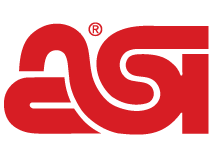News October 31, 2025
President Trump Agrees To Lower Some Tariffs, Pauses Port Fees After Meeting With Chinese President
The agreement could help ease some trade tensions between the U.S. and China moving forward, but businesses still have some questions.
Key Takeaways
• President Trump and Chinese President Xi Jinping met in South Korea to ease tensions in the ongoing trade war, agreeing to suspend port fees for a year and reduce the fentanyl tariff from 20% to 10%.
• With the majority of promo products sourced from China, the industry is cautiously optimistic about the potential clarity a trade agreement could bring, though many companies have already begun diversifying supply chains.
• The one-year pause on port fees gives importers some breathing room, but uncertainty remains around long-term maritime trade policy and its impact on sourcing strategies.
The U.S. and China have reached a crucial point in the global trade war.
U.S. President Donald Trump and Chinese President Xi Jinping met this week in South Korea to forge a path forward on matters of international trade. The discussion comes after several months of tit-for-tat retaliations from both leaders in the fight for global trade dominance.
Coming out of the meeting, both countries have agreed to suspend port fees on each other’s ships for a year. President Trump also announced he will cut the “fentanyl” tariff on Chinese goods entering the U.S. from 20% down to 10%. While a formal trade deal has yet to be signed, the conversation represents an important step as the two countries seek to de-escalate trade tensions.
For the branded merch industry, where the overwhelming majority of products come from China, a trade agreement could offer a bit of clarity around future sourcing plans and strategies – but plenty of questions remain regarding tariffs on promo products.
China and the U.S. have been playing a game of cat and mouse over the last several months, threatening one trade escalation after another. Perhaps most notably, China has been forceful in its retaliations against the U.S. in response to tariffs President Trump has threatened or imposed on both China and trade partners globally.
On February 1, President Trump announced the introduction of a 10% tariff on Chinese imports to curb illegal substances allegedly entering the U.S. from China. The following month, he doubled the tariff to 20%. Then, in April, President Trump announced a series of reciprocal tariffs which would place a tax on foreign goods entering the U.S. The reciprocal tariffs included an additional 34% levy on Chinese goods, bringing the total tariff rate to 54%. After various retaliatory measures from China, President Trump gradually increased these tariffs to 145% in April. Trump eventually walked back these tariffs, bringing the rate back down to 30%. (This doesn’t take into account the tariffs the president had levied against China during his first term.)
Earlier this month, however, the president threatened to tack on an additional 100% tariff to those already in effect, after China increased restrictions on rare earth minerals used in everything from smartphones and LED lights to U.S. military fighter jets. Given how heavily the U.S. relies on these materials across industries, the controls were the main discussion item on the agenda this week. Coming out of the meeting, China has agreed to postpone the introduction of its latest round of restrictions, but it won’t roll them back – at least not yet. Nonetheless, President Trump is counting this as a win. He ranked the meeting a “12 out of 10.”
President Trump has confirmed he will bring the fentanyl tariff from 20% to 10%, which would reduce overall tariffs on Chinese goods to 47%. The announcement comes as promo companies have begun to move some or all production out of China. Counselor Top 40 supplier World Emblem (asi/98264), for instance, has been gradually reshoring its production away from China and back into North America. Counselor Top 40 distributor BAMKO (asi/131431), the industry’s ninth largest distributor, has been diversifying its supply chain since 2018, and now sources 84% of products outside China according to a blog post.
Port Fees on U.S. & Chinese Vessels Suspended by a Year
Despite President Trump’s post-meeting optimism, the trade talks between the U.S. and China are far from over. The two leaders are still working out a number of issues, such as reciprocal port fees the two countries spurred on each other earlier this month.
The fees were slated to begin at $50 per net ton for Chinese vessel owners and operators and $18 per net ton for China-built vessels from non-Chinese carriers, but the latter would also include a charge per container. The fees would gradually increase each year until at least 2028.
Importers and carriers were already beginning to think about ways to navigate these uncharted waters.
“At this time, most of the carriers that we use [have] stated that they do not plan to impose surcharges related to the port fees on China-built/China-linked vessels,” Jing Rong, VP of supply chain & sustainability at Counselor Top 40 supplier HPG (asi/61966; Canada, asi/48886), told ASI Media earlier this month. “They will first try to avoid the fee by redeploying non-Chinese-built tonnage to U.S. lanes.”
In a world where global trade updates happen almost daily, some might welcome a yearlong reprieve from further port fees. Others, however, are anxiously awaiting updates as China and the U.S. iron out the fine print. After all, the broader question of whether port fees will become a cornerstone of maritime trade policy – and what it means for the promo industry and beyond – remains unresolved.
